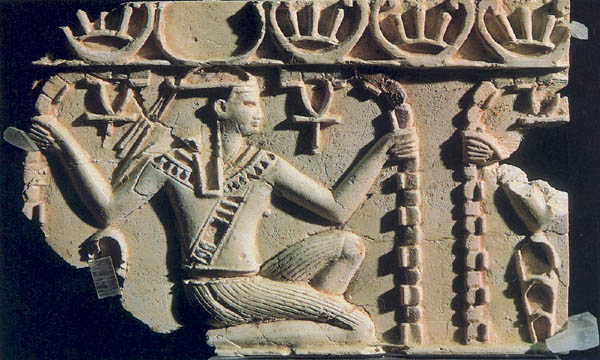Image Details

Collections of the Israel Department of Antiquities and Museums/Photo: Israel Museum, Jerusalem
Phoenician ivory from the Israelite palace at Samaria. One of more than 500 fragments dated to the ninth or eighth century B.C.E., this panel depicts Heh, the Egyptian deity representing “thousands of years.” In each hand, Heh grasps a palm branch from which hangs an ankh sign, a symbol of generation or enduring life. Usually imported from Phoenicia and used as decorative inlays on furniture, boxes and walls, carved ivory panels reflect the eighth century’s affluent and luxury-loving society, which the prophet Amos warned: “Woe to you who put far off the day of doom … Who lie on beds of ivory” (Amos 6:3–4).
